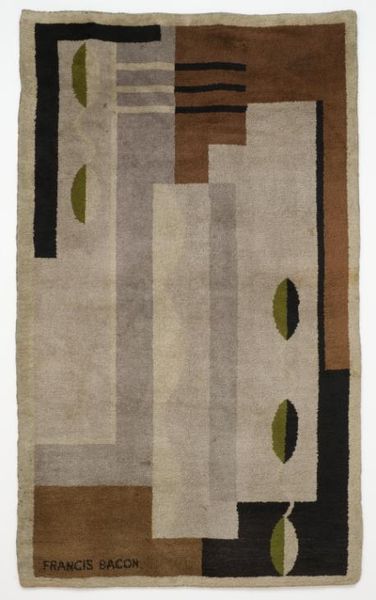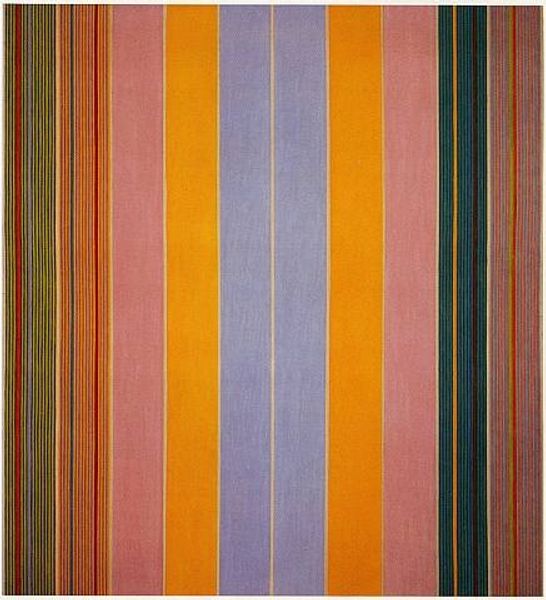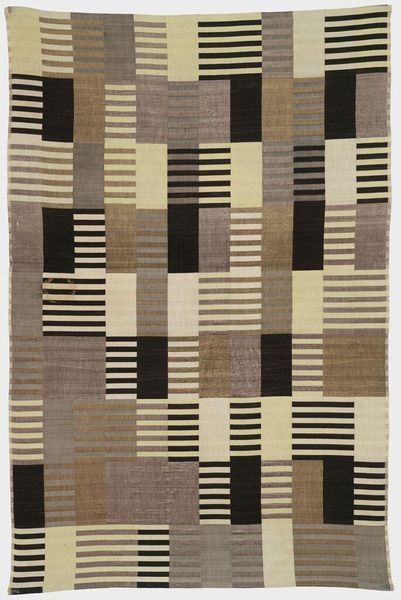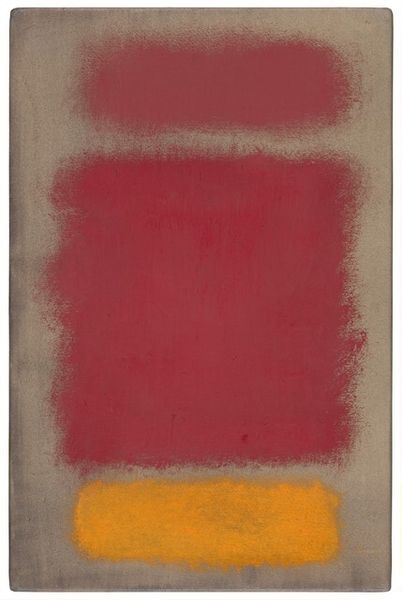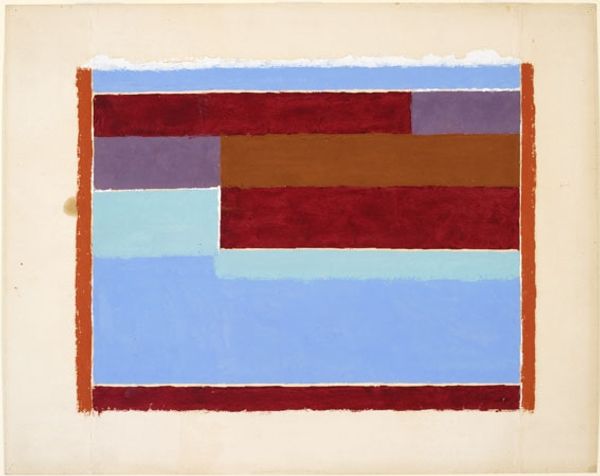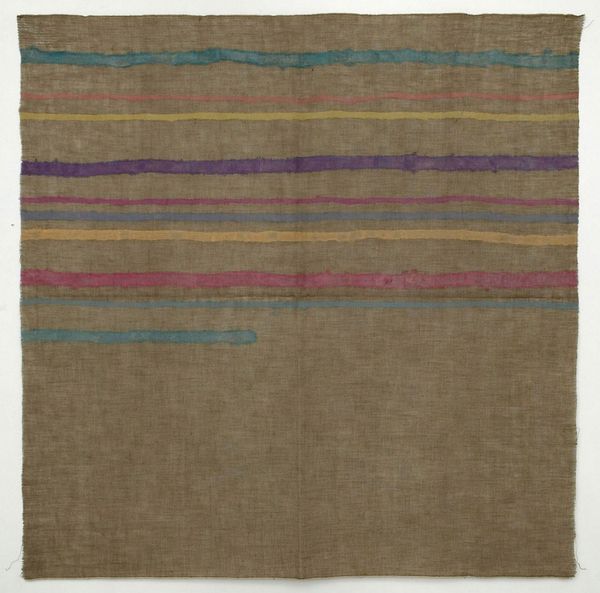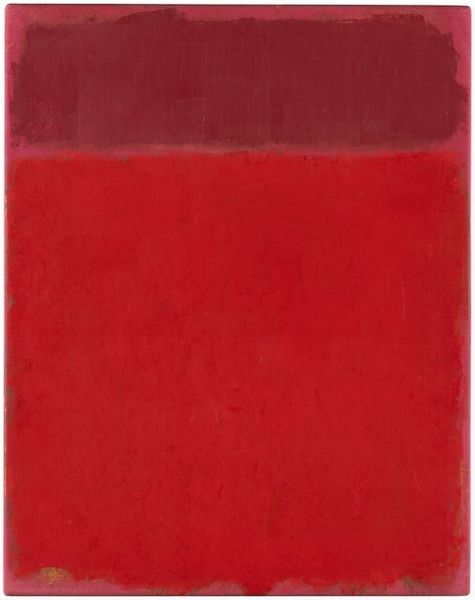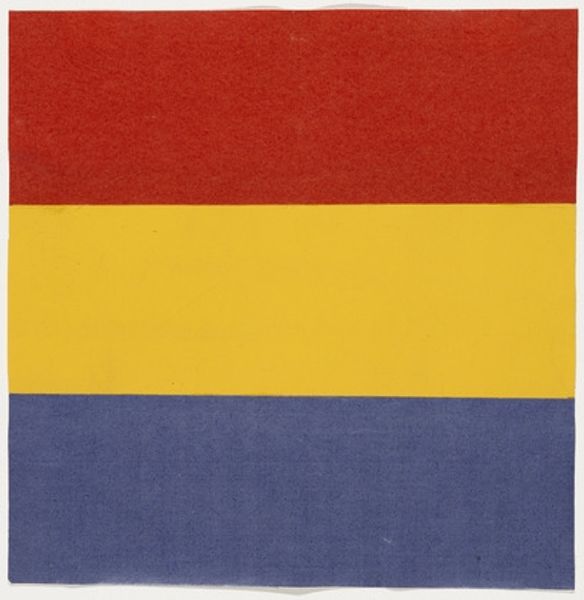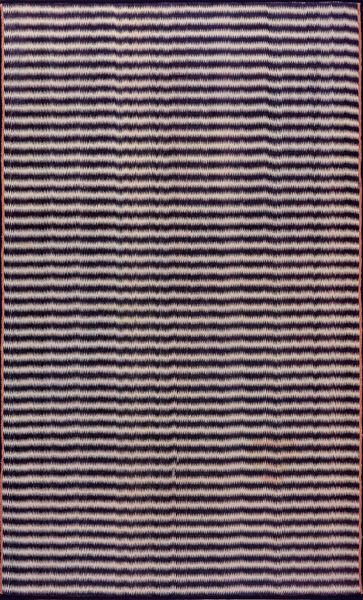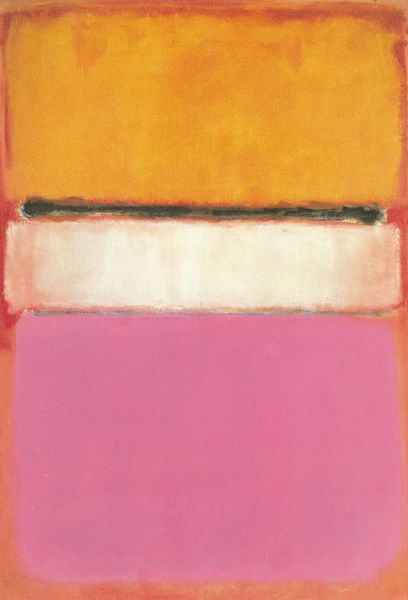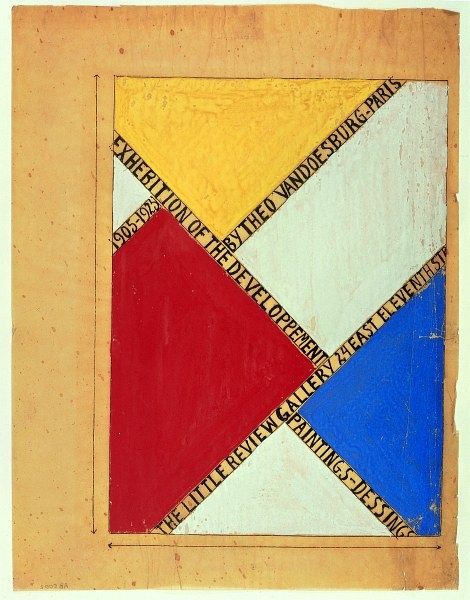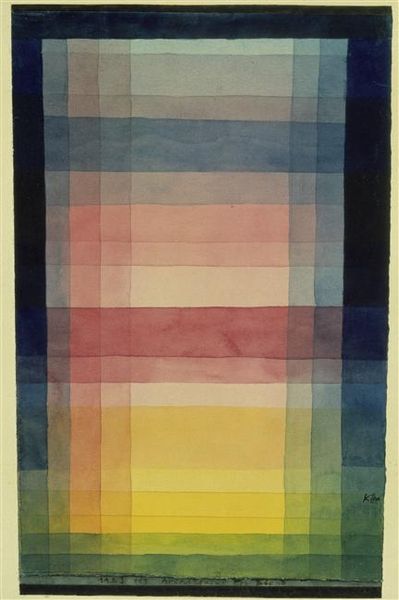
painting, oil-paint
#
abstract-expressionism
#
non-objective-art
#
painting
#
oil-paint
#
landscape
#
colour-field-painting
#
form
#
geometric-abstraction
#
abstraction
#
modernism
Copyright: Mark Rothko,Fair Use
Editor: This is Mark Rothko’s "Orange over Violet," created in 1968 using oil paint. The stacked, hazy rectangles of color give me a feeling of quiet contemplation. What stands out to you in this piece? Curator: Rothko's work occupies a significant place in the history of art, particularly in how museums and galleries began engaging with abstract expressionism in the mid-20th century. How do you think its monumentality affects viewers? Do you see a link to his shift towards darker hues later in his career? Editor: The scale is definitely overwhelming, making you feel enveloped by the color. And yes, there’s a somberness here, even with the orange, hinting at his later, darker works. Was this painting meant to evoke a specific emotional response from viewers? Curator: Rothko's pieces aimed to transcend mere decoration. These vast canvases aimed to create an environment, encouraging viewers to engage with color on a deeply personal and perhaps even spiritual level. Considering the social and political turmoil of 1968, might the painting be interpreted as a space for introspection or even escape? Editor: That’s a great point. Seeing it within the context of 1968 really changes my perspective. It wasn't just about the aesthetics of color, but also a response to the anxieties of the time, giving people a place to reflect. Curator: Precisely! Rothko's legacy prompts ongoing debates about the role of art in public life and how institutions shape our encounters with it. The ambiguity encourages endless reinterpretations. Editor: I'm glad to hear more about it. I now see it as more than just abstract art, a time capsule reflecting on a pivotal moment. Curator: Indeed, and it reminds us that even abstract forms can be deeply rooted in social and historical realities.
Comments
No comments
Be the first to comment and join the conversation on the ultimate creative platform.
